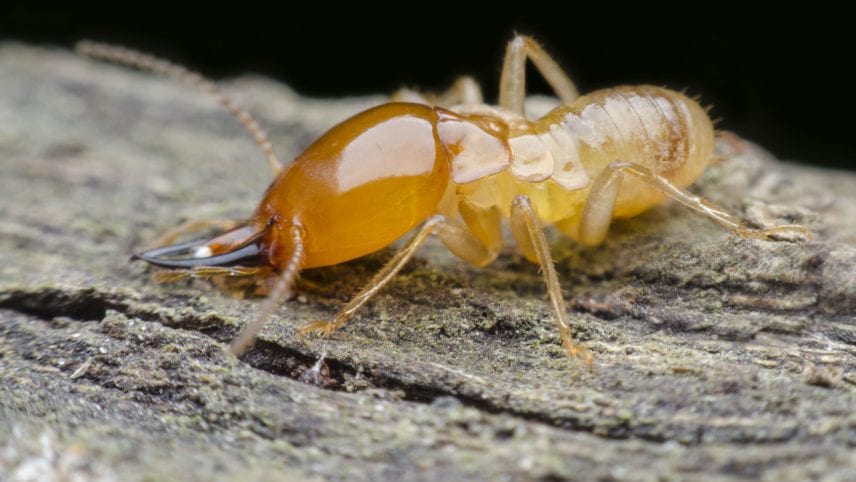More than 600,000 homes in the United States become infested with termites every year. Left to their own devices, these tiny pests can cause thousands of dollars of damage. So getting on top of an infestation quickly is vital if you want to protect your home.
However, did you know that there are currently nearly 2,750 different types of termites identified worldwide? Knowing which kind you are dealing with is vital if you are going to get rid of them successfully.
So what are the different types of termites and how do you tell them apart? If you’re not sure where to start you’re in the right place!
Read on to find out everything you need to know about identifying termites and the different species you may encounter in your home.
Subterranean Termites
As their name might suggest, this species of termite lives underground. Generally, they burrow in the soil around your home and rarely come above ground. This is because they are particularly susceptible to drying out.
Subterranean termites affect homes all over America. However, they are especially common in warm, damp climates. As a result, they affect a lot of homes in the south and southeast of the US.
Spotting Subterranean Termites
One of the easiest ways to identify a subterranean infestation is to look out for a honeycomb pattern wood. This is because these termites will only eat softwood fiber and will leave anything else behind.
This leaves a distinctive pattern wherever they have been feasting. This is also a handy way of spotting exactly which areas of your home they have affected.
Drywood Termites
Drywood termites are some of the longest living insects in the US so you may already be familiar with them. These pests make their homes in dry wood, which means they survive very well inside homes.
They can make homes in the flooring, framework, and furniture of a home. In fact, more often than not they will create multiple colonies throughout a home during an infestation.
While they survive well indoors, they often come in from outside. This is why it is important to treat antique furniture or furniture that has been sitting outside thoroughly.
Drywood termites fare better in warmer climates as they cannot withstand freezing temperatures. This makes them more common in the south. However, they can still be transported in wood to cooler parts of the country.
Spotting Drywood Termites
Drywood termites get their moisture from the wood they eat, sucking it dry as they go. Because of this, wood that has been infested by drywood termites often looks incredibly smooth and clean.
Dampwood Termites
Dampwood termites can also survive outside the soil by living in wood. However, these termites require a damp environment. This is why you will often find them in dead trees, decaying wood, and run-down buildings.
If you experience a leak, wood-to-ground contact, or damp issue in your home this can encourage dampwood termites to create a colony. If you do experience any of these issues, it is important to take care of them quickly. Then get help from an expert pest control company to ensure you don’t have an infestation.
Spotting Dampwood Termites
Spotting dampwood termites is generally a lot harder than spotting drywood or subterranean ones. This is because they affect wood that already appears damaged.
However, they do a lot of damage to the structure inside the wood. This means that if you press on the wood it will often feel soft and may give way completely.
You can also keep an eye out for fecal pellets and dead swarmers. These are signs left behind by a termite colony.
Formosan Termites
Formosan termites are by far the most destructive type of termites that can infect your home.
They are a specific species of subterranean termite, however, they can survive for long periods of time outside the soil. They do this by forming a moisture nest within the colony itself. This acts as a water source that can sustain the colony while they search for more water.
Formosan termites are also exceptionally fast breeders, which is one of the reasons they can do so much damage. Their queens can lay over 1,000 eggs every day and each colony has upwards of 300,000 worker mites. This is why getting on top of a Formosan termite infestation is integral if you want to contain it properly!
Spotting Formosan Termites
Formosan termites are flying termites, which means you may notice the ‘swarmers’ of a colony buzzing around the infested area. These look a lot like flying ants but have much thicker waists.
They are much bigger than other termites, measuring around 5/16 of an inch. So if you notice particularly large termites in your home, they could be Formosans.
Formosan termites damage wood from the inside, which can leave the wood sounding hollow when you knock on it. You may also notice that the wood has been eaten along the line of the grain pattern. If you notice these two things you could have a Formosan termite infestation.
Keep an Eye Out for Different Types of Termites in Your Home!
As you can see there are lots of different types of termites that can infest your home and cause enormous amounts of damage. Knowing how to identify termites quickly is the first step to getting rid of them – acting fast is the second!
If you’re concerned about termites in your home, get in touch today. We’re here to help!


